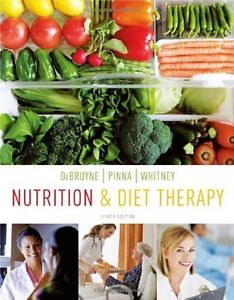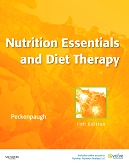Test Bank For Nutrition And Diet Therapy 8th Edition By Linda Kelly DeBruyne
Original price was: $75.00.$45.00Current price is: $45.00.
Test Bank For Nutrition And Diet Therapy 8th Edition By Linda Kelly DeBruyne provides an essential resource for anyone studying nutrition and diet therapy. The book covers all the key concepts and topics in the field and provides multiple-choice questions to help readers test their understanding.
In addition, the Test Bank For Nutrition And Diet Therapy 8th Edition By Linda Kelly DeBruyne includes a comprehensive glossary of terms, making it an invaluable reference tool. Whether you’re a student or a practicing dietitian, Test Bank For Nutrition And Diet Therapy 8th Edition By Linda Kelly DeBruyne is an essential resource for anyone interested in nutrition and diet therapy.
Digital item No Waiting Time Instant Download
ISBN-10 : 0840049447ISBN-13 : 978-0840049445
Description
Test Bank For Nutrition And Diet Therapy 8th Edition By Linda Kelly DeBruyne
Chapter 2 – Carbohydrates
Answer, K/A, page(s) K = knowledge question; A = application question
True/False
T K 34 1. Whenever carbohydrate is available to the body, the human brain depends exclusively on it as an energy source.
F K 36 2. Most food fiber is kcalorie-free.
T A 40 3. A client consumes 2600 kcalories per day and 50 grams of carbohydrate from concentrated sweets. According to the USDA Food Guide recommendations, the client’s sugar intake is within the guidelines.
F K 39 4. Experts agree that moderate amounts of sugar in the diet may pose a number of major health risks.
F A 48 5. A client consumes 2000 kcalories per day and 200 grams of carbohydrate. This person meets the current dietary recommendations for carbohydrate intake.
T A 48, 50 6. Cindy consumed 2 servings of vegetables, 2 servings of fruit, 5 servings of whole grains, and 2 servings of legumes during the day. Cindy meets the DV recommendation for fiber for the day.
Multiple Choice
a K 34 1. The main function of carbohydrates in the body is to:
a. furnish the body with energy.
b. provide material for synthesizing cell walls.
c. synthesize fat.
d. insulate the body to prevent heat loss.
c K 34 2. Which of the following is a simple carbohydrate?
a. starch
b. glycogen
c. sucrose
d. some fibers
a K 34 3. The _____ are the basic units of all carbohydrates.
a. monosaccharides
b. disaccharides
c. polysaccharides
d. sucrose molecules
e K 34-35 4. Three monosaccharides important in nutrition are:
a. glucose, lactose, and fructose.
b. fructose, glucose, and sucrose.
c. maltose, fructose, and lactose.
d. galactose, sucrose, and lactose.
e. fructose, glucose, and galactose.
d K 34 5. The primary source of energy for the brain and nervous system under normal conditions is:
a. sucrose.
b. amino acids.
c. fructose.
d. glucose.
e. fatty acids.
b K 35 6. The hormone that moves glucose from the blood into the cells is:
a. glucagon.
b. insulin.
c. testosterone.
d. sucrose.
d K 35 7. Which of the following does not come exclusively from plants?
a. glucose
b. maltose
c. fructose
d. galactose
a K 35 8. Fructose is:
a. the sweetest of the sugars.
b. known as milk sugar.
c. abundant in whole grains.
d. also known as dextrose.
d K 35 9. Fructose occurs naturally in:
a. bread.
b. milk.
c. meats.
d. fruits.
d K 35 10. Which monosaccharide is found most often in nature as a part of a disaccharide?
a. glucose
b. fructose
c. maltase
d. galactose
c K 35 11. Which of the following compounds is a disaccharide?
a. glucose
b. fructose
c. lactose
d. galactose
b K 35 12. All of the following terms are used to describe sucrose except:
a. white sugar.
b. milk sugar.
c. table sugar.
d. cane sugar.
b K 35 13. The most familiar source of sucrose is:
a. bread.
b. table sugar.
c. milk.
d. meat.
e. fruit.
d A 35 14. The principle carbohydrate in cakes and cookies is:
a. fructose.
b. galactose.
c. maltose.
d. sucrose.
a K 35 15. One molecule of sucrose contains _____ molecule(s) of glucose.
a. one
b. two
c. three
d. four
d K 35 16. Which of the following is the principal carbohydrate in milk?
a. galactose
b. fructose
c. sucrose
d. lactose
b K 35 17. Chemically, lactose is a:
a. monosaccharide.
b. disaccharide.
c. dextrose.
d. polysaccharide.
a K 35 18. An example of a polysaccharide is:
a. starch.
b. meat.
c. fruit.
d. protein.
b K 35 19. Which of the following carbohydrates is a polysaccharide?
a. fructose
b. starch
c. maltose
d. lactose
a K 36 20. The stored form of glucose in the body is called:
a. glycogen.
b. insulin.
c. fat.
d. muscle.
d K 34, 35 21. Polysaccharides are composed of:
a. one glucose unit.
b. two glucose units.
c. three glucose units.
d. many glucose units.
b K 36 22. Excess glucose in the blood is converted into glycogen and stored primarily in the:
a. brain and liver.
b. liver and muscles.
c. blood cells and brain.
d. pancreas and brain.
b K 36 23. The richest sources of starch are:
a. fruits.
b. grains.
c. vegetables.
d. soybeans.
b K 36 24. Whole grains, vegetables, legumes, and fruits are rich sources of:
a. sucrose.
b. dietary fiber.
c. fat.
d. glycogen.
c K 36-37 25. Cellulose, pectin, hemicellulose, and gums are:
a. artificial sweeteners.
b. sugar alcohols.
c. fibers.
d. simple carbohydrates.
d K 37 26. _____ is a fiber found in all vegetables, fruits, and legumes.
a. Hemicelluose
b. Pectin
c. Mucilage
d. Cellulose
b K 36, 37 27. Which of the following fibers is a nonpolysaccharide?
a. cellulose
b. lignin
c. pectin
d. gum
c K 37 28. All of the following fibers are used by the food industry as additives or stabilizers except:
a. pectins.
b. gums.
c. lignins.
d. mucilages.
a K 37 29. _____ escape digestion and absorption in the small intestine.
a. Resistant starches
b. Polysaccharides
c. Bacteria
d. Disaccharides
b K 37 30. Fibers are categorized by:
a. the type of chemical bonds that hold them together.
b. their chemical and physical properties.
c. the number of hydrogen molecules they contain.
d. their ability to be digested by human enzymes.
c K 38 31. The sugars in fruits, vegetables, grains, and milk are:
a. usually added to these foods.
b. considered discretionary kcalories.
c. naturally occurring.
d. resistant to digestion.





Be the first to review “Test Bank For Nutrition And Diet Therapy 8th Edition By Linda Kelly DeBruyne”